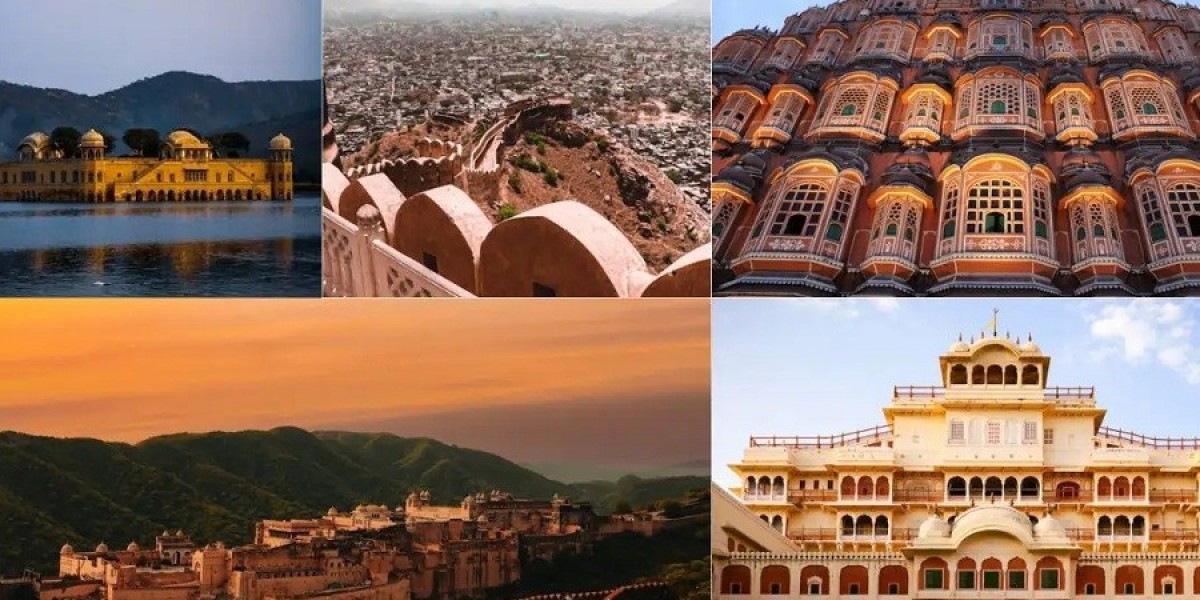Jaipur is a royal city full of forts, palaces, and markets. Many people know the city for its pink buildings, grand palaces, and desert charm. But Jaipur also hides some unique gems that few travelers explore. These are its ancient stepwells.
Stepwells, also called baoris or baolis, are deep wells with steps leading down to the water. They are not only water sources but also examples of local art and culture. Jaipur has many stepwells that show the beauty of Rajput architecture and the skill of old craftsmen.
In this blog, I will take you on a journey to explore the famous stepwells in Jaipur. You will learn their history, the best ones to visit, the right time to explore them, and how to plan your stepwell tour in Jaipur. By the end, you will see why these places deserve a spot on your travel list.
History of Stepwells in Jaipur
Water is precious in Rajasthan. The land has a desert climate, and rain is not regular. People needed smart ways to store and save water. Stepwells became one of the best answers to this problem.
Kings and wealthy traders built stepwells in villages, towns, and cities. These wells stored water for daily use, farming, and drinking. People also used them as resting places in summer because stepwells stayed cool. Some stepwells became social hubs where locals gathered, prayed, and celebrated festivals.
In Jaipur, stepwells came up during the rule of the Kachwaha Rajputs. They built many wells to serve travelers, villagers, and traders. Most stepwells here have fine carvings, long steps, and beautiful arches. Some look simple, while others look like mini palaces.
Stepwells in Jaipur are not only water tanks but also reminders of Rajasthan’s creative and practical side. Even today, they tell stories of the past and show how people lived with the harsh desert climate.
Famous Stepwells in Jaipur
Let us now explore some of the most famous stepwells in Jaipur and nearby areas. Each one has its own charm and story.
1. Panna Meena ka Kund
Panna Meena ka Kund is the most popular stepwell in Jaipur. It lies near Amer Fort and is a favorite stop for photographers. The stepwell is square-shaped and has steps in a zigzag style. The pattern of the steps makes it look like a puzzle.
Local people say this stepwell is about 400 years old. It has eight levels, and water once filled the base. Today, it may not always have water, but the structure is still eye-catching. Travelers love to sit on the steps, click photos, and enjoy the view.
If you plan a trip to Amer Fort, you must stop at Panna Meena ka Kund. It takes only 10 minutes to walk here from the fort. The peace of the place is a nice break from the busy fort.
2. Chand Baori (near Jaipur)
Chand Baori is not inside Jaipur city but in Abhaneri village, about 95 km away. Still, it is one of the most famous stepwells in Rajasthan and worth the drive.
This stepwell is among the largest in India. It has 3,500 narrow steps arranged in perfect order. The well goes about 13 stories deep. When you stand at the top, the view of the steps looks like a giant maze.
Chand Baori dates back to the 9th century and shows early Rajput architecture. The stepwell also has a temple dedicated to Harshat Mata, the goddess of joy. Many Bollywood and Hollywood films used Chand Baori as a shooting spot. If you love history and photography, this place is a must-visit.
3. Nahargarh Stepwell
Nahargarh Fort is a famous site in Jaipur, but not many visitors know about its hidden stepwell. The Nahargarh Stepwell is close to the fort and has an unusual design. The steps here do not follow the typical square pattern. Instead, they spread in a different, irregular style that looks unique.
This stepwell is not as large as Panna Meena ka Kund or Chand Baori, but it gives you a glimpse of smart engineering. It collected rainwater from the hills around Nahargarh Fort. The water supported people living inside the fort during times of need.
When you explore Nahargarh Fort, take a little time to see this stepwell. It adds more meaning to your fort visit.
4. Bawdi at Amber Fort
Amber Fort is one of Jaipur’s most visited sites. Inside its walls lies a beautiful bawdi or stepwell. It is smaller than Panna Meena ka Kund but carries royal charm. This stepwell once served the people of the fort and supplied water during long summers.
The structure blends with the fort’s design. You can see carved stones, clean steps, and the old water tank. Many travelers miss this spot because they rush through the fort. If you want to experience the hidden gems of Amber, make sure to stop at this bawdi.
5. Bhandarej Baori (near Jaipur)
About 60 km from Jaipur lies Dausa, a small town known for its ancient baoris. Bhandarej Baori is one such gem. This stepwell is not only deep but also full of carvings and designs. Local stories say it dates back many centuries.
The stepwell once served as the main water source for the town. Today, it is a place for travelers who love history and architecture. Since it lies on the Jaipur-Agra highway, you can plan a stop here if you are on a road trip.
6. Jagat Shiromani Temple Baori
Near Amer, close to the Jagat Shiromani Temple, lies another stepwell. This baori may not be as grand as Panna Meena ka Kund, but it carries spiritual value. Pilgrims visiting the temple used this stepwell in the past. The simple design shows how stepwells worked as part of everyday life in Jaipur.
These stepwells may look different in size and style, but they all show the same spirit of Rajasthan—strength, art, and survival in the desert.
Best Time to Visit Jaipur’s Stepwells
The best time to visit stepwells in Jaipur is during the cooler months. From October to March, the weather is pleasant, and you can walk around without much heat.
Winter (Nov–Feb): Perfect for sightseeing. The cool breeze makes it easy to climb steps and spend time exploring.
Monsoon (July–Sept): Stepwells sometimes collect rainwater during this time. They look fresh and charming, but travel may be tricky due to rains.
Summer (Apr–June): Stepwells remain cooler than the outside, but the city heat is strong. If you come in summer, visit them early morning or late evening.
Overall, winter is the best time to enjoy Jaipur’s stepwells. You can take your time, click photos, and enjoy the local vibe.
Travel Tips for Exploring Stepwells
Exploring stepwells is fun, but you should follow some simple tips to make the most of your visit.
Wear Comfortable Shoes
Stepwells have many steps. Wear light shoes or sandals that help you walk easily.Carry Water and Snacks
Even though stepwells once gave water, today most of them are dry. Keep your own water bottle, especially in summer.Respect Local Rules
Some stepwells do not allow people to go down to the water for safety reasons. Follow the rules and respect signs.Photography Tips
Morning and evening give the best light for photos. Stepwells often look dramatic with shadows and sunlight.Hire a Local Guide
If you want to know the stories behind stepwells, take a guide. They share legends and facts that you will not find in books.Stay Safe
The steps can be steep and uneven. Walk slowly and avoid leaning too far over the edge.Plan Together with Other Sights
Many stepwells lie near forts and temples. Plan your tour so you can cover more in one trip.
Suggested Itinerary for Stepwell Tour in Jaipur
Here is a simple 2-day plan to explore Jaipur’s famous stepwells along with other attractions.
Day 1: Amer Region
Start your morning at Amber Fort. Explore the palace, temples, and hidden stepwell.
Walk to Panna Meena ka Kund for photos and relaxation.
Visit Jagat Shiromani Temple and see its baori.
Enjoy lunch at a local restaurant in Amer.
In the evening, watch the light and sound show at Amber Fort.
Day 2: Nahargarh and Around
Begin at Nahargarh Fort and visit the stepwell nearby. Enjoy the fort’s view of Jaipur city.
Drive to Bhandarej Baori in Dausa if you like long drives.
If time allows, take a full-day trip to Chand Baori in Abhaneri. Spend time exploring the steps and the Harshat Mata temple.
Return to Jaipur by evening.
This plan covers the best stepwells and also gives you a taste of forts, temples, and villages around Jaipur.
Conclusion
Stepwells are more than just water tanks. They are stories carved in stone. They show how people lived, worked, and prayed in the desert land of Rajasthan. Jaipur, with its royal charm, holds many such stepwells that blend art and function.
From the famous Panna Meena ka Kund to the grand Chand Baori, each stepwell gives you a chance to step back in time. They are cool spots in the heat, photo-friendly corners for travelers, and cultural reminders of the city’s past.
So, when you plan your trip to Jaipur, do not just see forts and palaces. Add stepwells to your list. Walk down the steps, touch the stones, and imagine life hundreds of years ago. You will come back with stories, photos, and memories that last forever.








